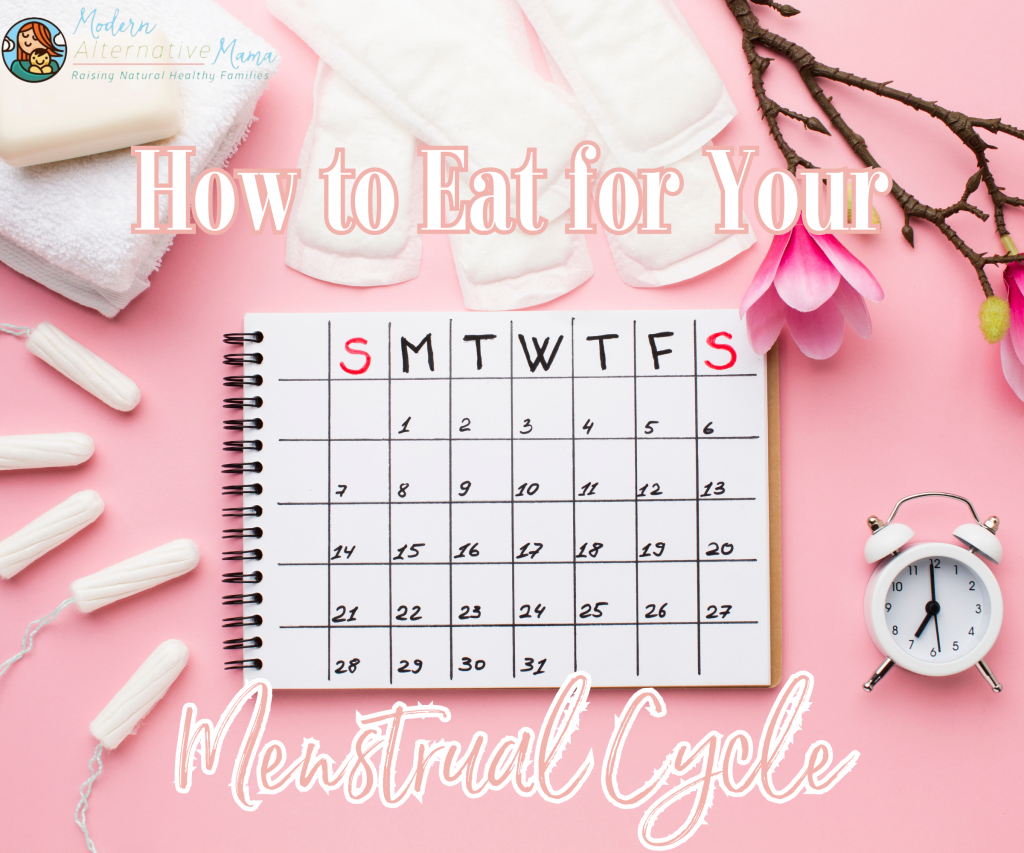Something that blows my mind over and over again is how little most of us were taught about our own menstrual cycles. Growing up, the only real “education” we got was that we bleed once a month and we’re not supposed to talk about it. That’s it. No deeper understanding, no real empowerment -just a vague sense of inconvenience and secrecy.
And honestly? I blame the fact that modern medicine has spent centuries obsessing over the male body while largely ignoring just how wildly different female bodies are. Nearly all health research, medical advice, and even basic wellness recommendations have been based on studies of men, despite the fact that our biology is, quite literally, nothing like theirs. What’s even more frustrating? Women throughout history did understand their bodies. They knew how to support their cycles and work with their hormones, not against them. But somewhere along the way, that wisdom got buried under a one-size-fits-all approach to health. Only now is the mainstream medical world finally waking up to the fact that women’s bodies need to be studied separately. Because, let’s be real —biologically, we couldn’t be more different.
One of the most significant differences between male and female bodies is the variation in our hormonal cycles. Men operate on a 24-hour cycle, meaning their hormones reset daily. Their energy, metabolism, and mood are relatively stable, predictable, and consistent. Women, on the other hand, undergo a roughly 28–33 day cycle, with four distinct phases—each affecting their energy, mood, metabolism, cognitive function, and overall well-being in completely different ways.
4 Phases of the Menstrual Cycle
I love thinking of the phases of the menstrual cycle like the seasons—because just like nature shifts from winter to spring to summer to fall, our bodies move through their own natural rhythms. Our energy changes, our moods fluctuate, and even our behaviors adapt based on where we are in our cycle.
And while no two bodies follow the exact same timeline (just like no two trees bloom at exactly the same time in spring), our menstrual phases generally fall within a similar range of days. It’s a beautiful, cyclical pattern—one that, when we learn to work with, can help us reduce PMS and feel more balanced and in sync with ourselves.
Now, let’s explore what each phase entails and how you can best support yourself during these times.
Menstruation (Days 1-5)
When we hear “menstrual cycle,” most of us immediately think of our period—but that’s actually just one part of the cycle. Menstruation occurs when our hormones reach their lowest point, signaling the uterus to shed its lining, also known as your period. During this time, you’re losing iron and releasing prostaglandins, which can trigger cramping and fatigue.
I love thinking of this phase as winter, because just like the quiet, restful energy of the season, our bodies naturally slow down. We tend to feel more inward, craving comfort and rest. And that’s precisely what we should be giving ourselves during this time.
What to Eat
Focusing on foods that build iron, aid in absorption, are high in magnesium, and also help fight inflammation are the best for your body during your period. Foods like:
- Proteins: grass-fed red meat, liver, duck, pork, sardines, lentils, kidney beans
- Vegetables: spinach, chard, kale, beets, mushrooms, root veggies,
- Fruits: blueberries, black berries, cherries, papaya, watermelon
- Grains: wild rice, buckwheat
- Nuts and seeds: pumpkin seeds, flax seeds, brazil nuts
- Herbs: turmeric, nettle, raspberry leaf, cramp bark, peppermint
DIY drink recipe perfect for your menstrual phase: Golden milk latte
Supplement that will help support discomfort during menstruation: Earthley’s Ease the Ache
Hydration
When you’re on your period, your body is losing more than just blood—it’s also losing fluids, which means you need to drink more water. Increasing your water intake to at least 80 oz a day can help reduce bloating and potentially make cramps less intense.
And while that morning coffee might be calling your name, skipping caffeine during your period is not a good idea. It can spike cortisol, which just adds to the fatigue, anxiety, and cramps you might already be feeling. Swapping that coffee for a lovely herbal tea will do your body good.
Movement
It’s very natural during this time for your energy to feel low, and that’s why not pushing yourself too much during this time might be exactly what your body needs. Maybe you just feel like resting, and if you do, listen to your body! However, if you’re craving movement, gentle and low-impact exercises may be the best option for you. Walking, gentle yoga, or light cycling can help your body feel supported in this phase.
Follicular (Days 6-14)
The follicular phase is the time when our hormones begin to rise again, helping the uterus prepare an egg that will be released in the next phase. As estrogen and testosterone levels steadily increase, we naturally feel more energetic, mentally clear, strong, and lively. Follicular is like the spring — a season of renewal, fresh energy, and new beginnings. Just as the world starts waking up after winter, we begin to feel more motivated and energized.
What to Eat
Focusing on foods that help sustain and build energy, as well as ignite digestion, is key during this phase. Foods rich in probiotics and minerals will nourish your body and help keep things moving smoothly. As estrogen levels rise, it’s also beneficial to incorporate foods like carrots that can help regulate estrogen production. Excess estrogen can cause a hormonal imbalance and worsen PMS later in your cycle.
- Protein: Poultry, white fish, eggs, dairy products.
- Vegetables: lettuce, peas, green beans, carrots, sprouts, artichokes, broccoli, parsley, cilantro
- Fruit: Lemons, oranges, limes, pineapple, kiwi, strawberries
- Grains: quinoa, oats, rye, sourdough
- Fermented foods: sauerkraut, kombucha, miso
- Nuts and Seeds: almonds, hemp seeds, pumpkin seeds, flax seeds, Brazil nuts
- Herbs: dandelion root, red clover, schisandra berries, nettle, burdock root
DIY drink recipe perfect for your follicular phase: Strawberry Lemonade
A supplement to support your hormones during your follicular phase: Natural Balance
Hydration
Getting at least 2 quarts of water per day. You can add citrus to your water to help maintain your energy levels. If you’re a coffee lover, this is the perfect time! Because estrogen levels are consistently rising, it helps your body metabolize caffeine more effectively and won’t spike your cortisol levels.
Movement
Naturally, during follicular, you feel stronger and more energetic, so your body can handle more vigorous activity. If you love cardio, hot yoga, high-intensity workouts, weight and lifting, this is a great time to do them!
Ovulation (Days 15-17)
Ovulation is the shortest phase, and although there is typically one day when your body truly ovulates, there is still a window during which your hormones are at similar levels before they begin to decline. Ovulation is a time when testosterone and estrogen are at their highest, signaling to your body to release an egg into your fallopian tubes for fertilization. Ovulation is like the summer—a season of energy, connection, and fullness. Just like the warm summer days, it’s a time when we feel the most alive, outgoing, social, and magnetic.
What to Eat
This is a time when our bodies tend to retain water, which can cause us to feel bloated. Avoiding overly salty foods and increasing fiber intake are highly beneficial to our bodies during this time.
- Protein: grass-fed red meat, dark poultry meat, lamb, salmon, shellfish, eggs.
- Vegetables: broccoli, dark leafy greens, tomatoes, bell peppers, potatoes, zucchini, eggplant, asparagus, microgreens
- Grains: Quinoa, amaranth, brown rice
- Nuts and seeds: macadamia nuts, pistachios, sesame seeds, sunflower seeds
- Herbs: nettle, ginger, red clover, chaste tree, raspberry leaf
DIY drink recipe perfect for reducing bloating during ovulation: Ginger shots
Supplement to best support your hormones during ovulation: Earthley’s Lunamore
Hydration
Drink at least 2 quarts of water a day and consider adding Earthley’s Greens Powder to your water for extra fiber and nutrients as your hormones start to shift. Since estrogen levels are at their highest, drinking caffeine during this time shouldn’t lead to a crash or the jitters.
Movement
This is the time in your cycle when your energy has risen the highest, and right before it starts to drop. Engaging in high-energy activities, such as running, cycling, or hot yoga, during this phase can help alleviate constipation in the next phase of your cycle.
Luteal (Days 18-28)
When you think of mood swings, you’re likely thinking of your luteal phase. Luteal is the time when, if an egg hasn’t been fertilized, it disintegrates as your body prepares for a new menstrual cycle and your hormones begin to decline. During the first 2 or so days of this phase, you will experience stable energy, but that mood will slowly decline over the remaining 2 weeks. This is where PMS comes into play– if pregnancy doesn’t happen, your hormones take a considerable drop.
When estrogen plummets, so does serotonin, which can make you feel sad or on edge. You might also experience brain fog, sore breasts, headaches, and more. Supporting your liver during this time is crucial, as it will help your body rid itself of excess estrogen and can likely decrease premenstrual symptoms.
I love thinking of the luteal phase as the fall, because just like nature starts preparing for hibernation and shedding its leaves, we, too, begin to slow down and turn inward. Our energy starts to decline, our moods shift, and we naturally crave more comfort and nourishment.
What to Eat
Because progesterone levels are rising during this phase, you naturally become hungrier and experience increased cravings. Your body requires additional nutrients during this period as it prepares to lose a significant amount of blood during the next phase of your cycle. Focusing on foods that are high in magnesium, nutrient-dense, comforting, and rich in fiber, as well as packed with iron, will best support your body during your luteal phase.
- Protein: grass-fed red meat, turkey, salmon, halibut, tuna, black beans, chickpeas.
- Vegetables: cabbage, kale, chard, arugula, celery, squash, pumpkin, sweet potatoes, radishes
- Fruit: avocados, raspberries, figs, apples, pears, bananas, dates
- Grains: brown rice
- Nuts and seeds: sesame seeds, sunflower seeds, almonds, walnuts
- Herbs: peppermint, lemon balm, catnip, lavender, chamomile, ginger, burdock, dandelion
- Dark chocolate—preferably cacao for maximum magnesium
DIY drink recipe to nourish your body during luteal: bone broth hot chocolate
A supplement to support your hormones during luteal: Earthley’s Liver Love
Hydration
Ensure you drink at least 2 quarts of water per day and truly feel hydrated. Skip the caffeine during this phase, as it will spike your cortisol levels and dehydrate you, which can make PMS symptoms much worse. Swap that caffeine for a calming, nervine herbal tea instead to best support your mood in this phase.
Movement
More than likely, the first few days of your luteal phase, your energy will feel stable, meaning more vigorous workouts, such as running, cycling, and hot yoga, may work for you. In the latter half of your luteal phase, your energy will decrease rapidly, meaning lower-impact movements like weightlifting, walking, and gentle yoga are the way to go.



so is there just no time in the cycle that is safe to have fatty food, alcohol, or caffeine?
Thank you so much for this great question. The woman’s body is very particular, and imbalances can happen easily, which is why fatty foods, alcohol, or caffeine typically aren’t ideal. Of course, moderation is key, and healthy fats are crucial, but everyday consumption can be problematic. If you have any particular concerns, I’d be happy to help find hormone-friendly alternatives. 🙂